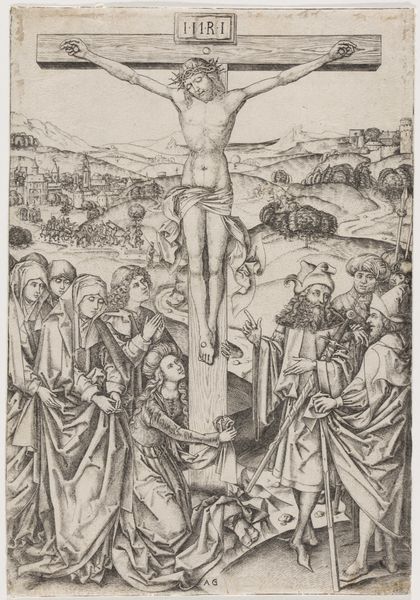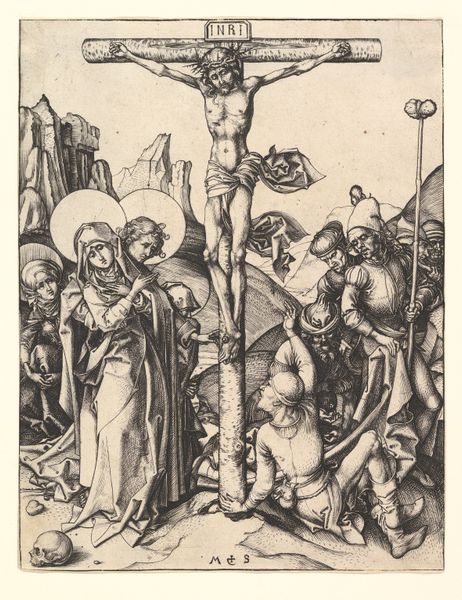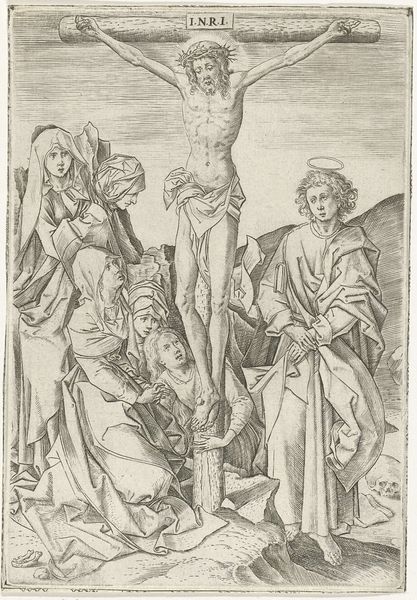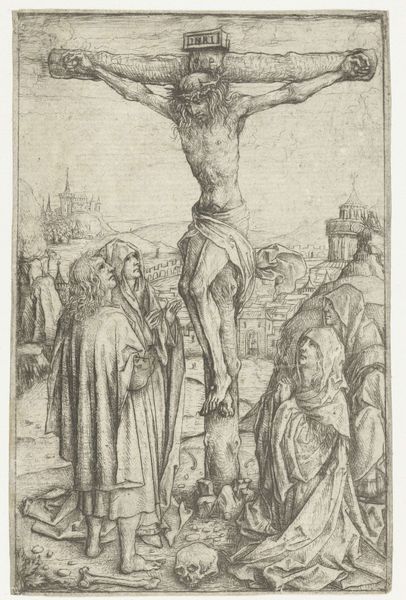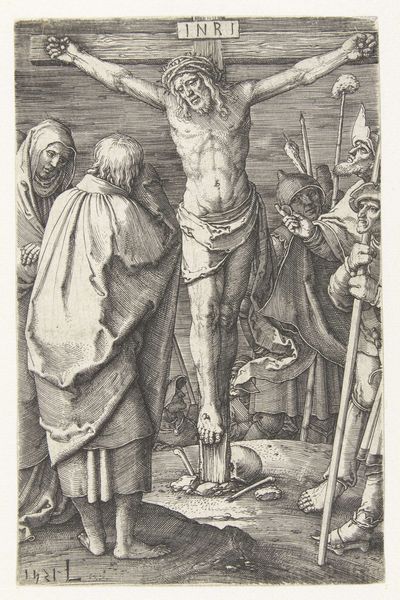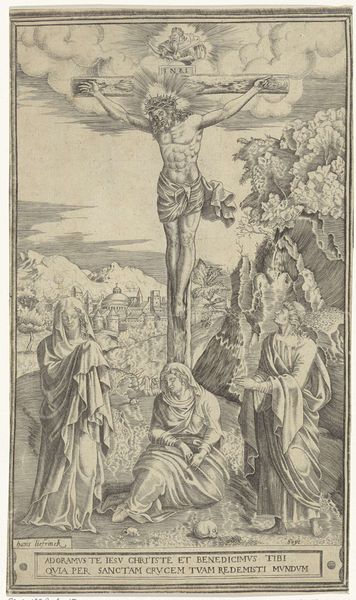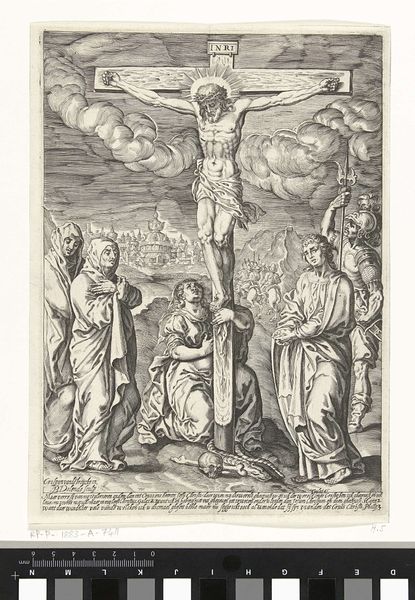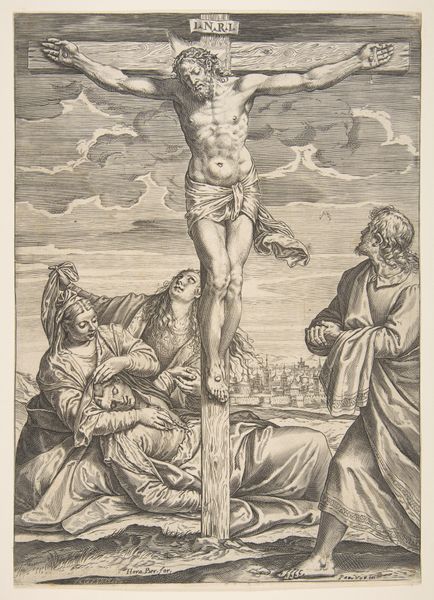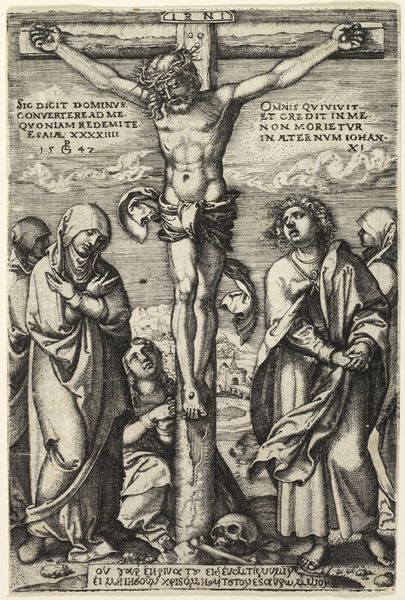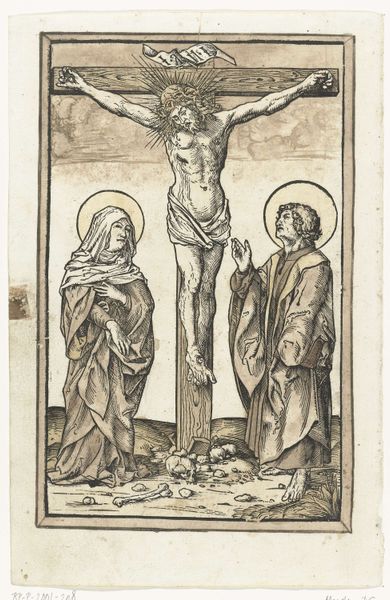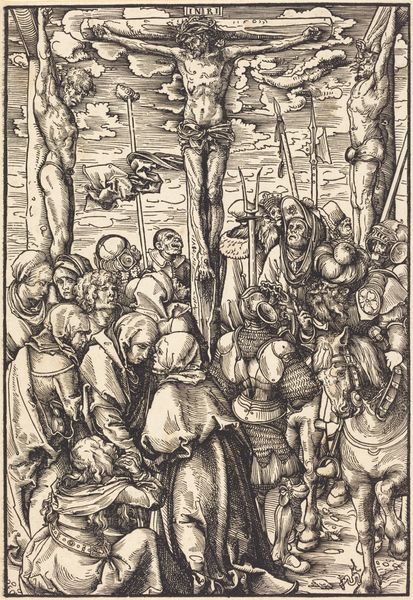
print, engraving
#
ink drawing
#
medieval
# print
#
figuration
#
history-painting
#
northern-renaissance
#
engraving
Dimensions: 147 mm (height) x 110 mm (width) (bladmaal)
Editor: We are looking at "The Crucifixion," an engraving, created between 1475 and 1490, by the artist known as Monogrammist AG. It's quite moving, with all of the figures arranged around Christ on the cross, full of expressive gestures. What stands out to you about its imagery? Curator: It is indeed a powerful composition. I'm struck by the duality within it. On one side, we see figures of sorrow, of empathy, mourning Christ’s suffering. On the other side, soldiers are present, indifferent. Look at how their weapons stand erect, piercing, aggressive. What emotional contrasts do *you* see? Editor: I see the grief and the almost aggressive nature of the other group…I guess it highlights the human range of emotions during this event, like it is illustrating various aspects of faith... but I do not know if that is really an emotional attribute... Curator: Exactly. Notice also the idealized landscape receding into the distance – almost indifferent to the scene's drama. Landscape in art carries the collective memory of a place, right? What meaning do you think this particular visual shorthand conveys in relation to this story? Editor: Maybe that this specific event is happening in one single point but still relevant universally? As a religious artwork, how does the artist incorporate both local and timeless symbols? Curator: The artist integrates both beautifully. Christ on the cross, a universally understood symbol of sacrifice. Simultaneously, the detailed rendering of garments and faces offers a glimpse into the material culture of the late 15th century. Consider the gesture of pointing… Why do you think Monogrammist AG chose to depict that particular hand gesture and toward what end? Editor: The pointing is almost accusatory, I did not recognize this symbol until now! It makes me reconsider all the figures portrayed on the lower-right... Thank you! Curator: My pleasure!
Comments
No comments
Be the first to comment and join the conversation on the ultimate creative platform.
